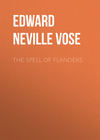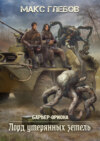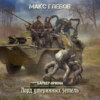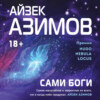Kitobni o'qish: «The Spell of Flanders»
PUBLISHERS’ NOTE
Lord Beaconsfield once said: “Flanders has been trodden by the feet and watered by the blood of countless generations of British soldiers.” This famous passage—which has received a new confirmation to-day—is typical of many references among English writers and statesmen to Flanders as a general term covering all of what is now known as Belgium. Among the citizens of that brave little Kingdom, however, and among most Continental writers, Flanders is recognised as being the name of only the northern part of Belgium. Small as that country is, it has for centuries been bi-lingual, the northern portion speaking Flemish, the southern French; and for centuries the history of the Flemish provinces was as distinct from that of the Walloon province to the southward as the early history of California or Texas was from that of New England.
Although eventually united under one Government with the Walloons and with what is now Holland, it was during the long period of their semi-independence that the Flemings achieved many of the artistic and architectural monuments that have made Flanders for all time one of the most interesting regions in the world.
While this book, therefore, does not attempt to describe the whole of Belgium, it does present a pen picture of the northern part of the country as it existed almost at the moment when the devastating scourge of the Great War swept across it.
FOREWORD
This book is the record of a vacation tour in the beautiful old Flemish towns of Northern Belgium beginning in May and ending in July of the Summer of 1914. The assassination of the Austrian Archduke Ferdinand and his wife at Sarajevo took place while our little party was viewing the mediæval houses and churches of Ghent and Audenaerde, but in the many discussions of that event to which we listened there was no whisper of the awful fate which the march of events was so soon to bring upon one of the most charming, peaceful and happy countries in the world.
Many of the descriptions in the following pages were written in or near the towns described, and within a day or so after the visit narrated. Then each old Flemish “monument” was in as perfect a state of preservation as the reverent pride and care of the Belgian populace and the learned and skilful restorations of the Belgian government could together accomplish. The fact that since these accounts were written many of these very towns have been swept by shot and shell, have been taken and retaken by hostile armies, have formed the stage upon which some of the direst tragedies of the world’s greatest and most terrible war have been enacted, will—it is hoped—give them a permanent interest and value. As a painting of some famous city as it appeared many years or centuries ago is of the utmost historical interest, even though by an inferior artist, so these halting word pictures of towns that have since been wholly or partially destroyed may help the reader to recall the glories that have passed away.
In accordance with the plan described in the first chapter, the tour of Flanders followed a decidedly zigzag itinerary, frequently visiting some town more than once. The purpose of this was to follow, in a fairly chronological sequence, as far as possible, the development of Flemish history, architecture and art. The outline of the intensely fascinating history of the old Flemish communes that has been thus presented may prove of interest to many readers who have been thrilled by the superb bravery of the little Belgian army in its defence of Flanders against overwhelming odds. As these glimpses into the past clearly show, the men of Belgium have engaged in a battle against foreign domination from the earliest ages. That it was at times a losing struggle never for a moment diminished the ardour of their resistance, or the depth of their devotion to liberty and the right to rule themselves. And when we consider how, during these centuries of conflict, and in defiance of obstacles that would have daunted a less strong-hearted people, the men of Flanders found the inspiration, the patience and the skill to erect some of the noblest examples of mediæval architecture, to create a school of painting that ranks as one of the most priceless heritages of the ages, and to excel in a half a score of other lines of artistic endeavour, we surely must all agree that here is a people we would not willingly see perish from the earth.
If to be neutral is to stand by and silently acquiesce in the destruction of Belgium as an independent nation, then the author of this book is not neutral. In every fibre of his being he protests against such a course as a crime against liberty, against humanity. Happily, from every corner of the United States come unmistakable evidences that the American people as a whole are not, at heart, neutral on this subject. The embattled farmers who stood on the bridge at Concord and fired “the shot heard round the world” have thrilled the imagination and stimulated the patriotism of every American schoolboy, but no less heroic is the spectacle of the little Belgian army under the personal leadership of its noble King standing like a rock on the last tiny strip of Belgian soil and stopping the onrush of the most powerful fighting organisation in the world. At Nieuport and Dixmude and along the bloodstained Yser Canal, the men of Belgium fought for the same cause of liberty for which our forefathers fought at Bunker Hill. Whatever our sympathies may be with respect to the larger aspects of the great world war—and as to these we may most properly remain neutral—our national history and traditions, the very principles of government to which we owe “all that we have and are,” cannot but confirm us in the profound conviction that no conclusion to this war can be just and right, or permanent, that does not once more restore the Belgian nation and guarantee that it shall remain completely and forever free.
On the other hand, while news of the damage done to some famous Flemish church or Hotel de Ville causes the author sensations akin to those that he would experience on learning of the wounding of a friend, this book will contain no complaint regarding German destruction of these monuments of architecture. At Ypres and Malines, where the havoc wrought cannot fail to have been fearful, the damage was done in the course of battles in which the most powerful engines of destruction ever invented by man were used on both sides. Much as we may deplore the results, we cannot blame the individual commanders. At Antwerp, Ghent, Bruges and many other famous Flemish cities the Germans appear to have made every effort to avoid wanton destruction and preserve the most notable historic edifices. After the war is over and we have learned exactly what structures have been destroyed, and under what circumstances, we can justly place whatever blame may attach to such a catastrophe where it belongs—but not until then. For the present we can only hope that the damage may be less than has been reported, and that in many instances it will be possible for the Belgians—so skilful in the work of restoration—to reconstruct the sections of famous buildings that have been damaged.
When the war is over many thousands of Americans and English will be eager to visit the battle-fields of Flanders and see for themselves the scenes of conflicts that will forever hold a great place in human history. The author ventures to hope that this little book may be found serviceable to such tourists as it contains much information not to be found in any guide book. If it aids any of them—or any of the far larger host of travellers whose journeys in far-off lands must be made by their home firesides—to understand Flanders better it will have achieved its purpose. It is one of the many ironies of the war that towns like Ypres and Malines, which were rarely visited by American tourists when they were in their perfection, will, no doubt, be visited by thousands now that the clash of arms has brought them at the same moment destruction and immortal fame.
Edward Neville Vose.
CHAPTER I
INTRODUCING FLANDERS AND THE FOUR PILGRIMS
“Flanders! Why, where is Flanders?”
“There! I told you she’d ask that question. You’ll have to start right at the beginning with her, and explain everything as you go along.”
We were planning our next vacation tour in Europe, which we had long before agreed to “do” together this year. That meant a party of four—the “Professor,” as I always called him, and his charming young wife, my wife, and myself. Like the plays in which the characters appear on the stage in the order that their names are printed on the programme, the arrangement I have just given is significant. The Professor is always first, a born leader-of-the-way. And I am usually last, carrying the heavy bundles.
Not that I am complaining. No doubt I was born to do it. Moreover, the Professor and I have been chums since boyhood. We worked our way through “prep” school and college together, came to New York together, and—in a modest way—have prospered together. At least, we felt prosperous enough to think of going to Europe. For some years he has been the head of the department of history in an important educational institution within the boundaries of the greater city, while I have devoted myself to journalism—and am therefore dubbed “the Editor,” whenever he wishes to refer to me as a personage instead of a human being, which, happily, is not very often. Of the two ladies in the proposed party I do not need to speak—not because there is nothing to say, but because they can speak for themselves. In fact, one of them has just spoken, has asked a question, and it has not yet been answered.
“Flanders, my dear,” said the Professor, speaking in his most sententious manner—as if delivering a lecture in his classroom—“is the most interesting and the least visited corner of Europe. It has more battle-fields and more Gothic churches per square mile than can be found anywhere else. In other parts of Europe you can see mediæval houses, here and there—usually in charge of a smirking caretaker, with his little guidebook for sale, and hungrily anticipating his little fee. In Flanders there are whole streets of them, whole towns that date from the sixteenth century or earlier—but for the costumes of the people, you could easily imagine yourself transported by some enchantment back to the days of Charles the Bold, or even to the time of the Crusaders.”
“Yes,” I added, “and there is no region in the world where the history of the past seems more real, more instinct with the emotions that govern human conduct to-day, than these quaint old Flemish towns. You stand in front of a marble skyscraper on Fifth Avenue and read a bronze tablet that tells you that here the Revolutionary forces under old Colonel Putnam, or whoever it was, delayed the advancing British and covered General Washington’s retreat. Now, does that tablet help you to reconstruct your history? No, you are quite aware that the fight took place when Fifth Avenue was open country, but your imagination will not work when you try to make it picture that scene for you right there on Fifth Avenue where the tablet says it happened.
“Now, it’s different in Flanders. You read in the history about how the burghers of Bruges, when the Duke of Burgundy, Philip the Good, tried to overawe the city by placing an army of archers in the market-place, swarmed out of their houses and down the narrow, crooked streets like so many angry bees. There are the same old houses, the identical narrow, crooked streets—a bit of an effort and you can picture it all—and how the Duke and his archers were driven back and back, while the burghers swarmed in ever increasing numbers, and the great tocsin in the belfry shrieked and clanged to tell the valiant weavers that their liberties were in danger.
“And take that other famous event, when they flung the murderers of Count Charles the Good—who lived and died five hundred years before the other Prince who, like him, was surnamed “the Good”—from the tower of the very cathedral in which they had murdered him. Why, you can climb the tower and look off across the same sea of red-roofed houses and down upon the same square, paved with cruelly jagged stones, as did the condemned men when, one by one, they were led to the edge of the parapet and sent hurtling down.”
“The point is well taken,” interrupted the Professor, “only that particular church is no longer standing—it was destroyed during the French Revolution. But really that makes little difference—there are plenty of other towers in Bruges that have witnessed stirring scenes. And all over Flanders it is the same way—nothing is easier than to make your history live again, for everywhere you have the original setting practically unchanged.”
“It’s all very well for you men,” observed Mrs. Professor, when her husband and I paused to get our breath, “who admire, or pretend to admire, battles and executions and that sort of thing, but if there is nothing else to see except places with such dreadfully unpleasant associations I, for one, don’t want to go there.”
“On the contrary,” I hastened to reply, seeing that the Professor was much disturbed at this unexpected result of all our eloquence, “Flanders has a lot of things to interest the ladies. Think of its famous laces and lacemakers—we can still find the latter at work in places like Bruges, Malines and Turnhout—of its rare old tapestries from Audenaerde and Tournai, and the fine linens of Courtrai. Then there are wood carvings the like of which you will travel far to see, and old Flemish furniture everywhere.”
“To say nothing of the pleasure of learning a little more about the great Flemish school of art in the very home towns of its most celebrated artists,” added the Professor, who was much elated to see that the frowns were leaving the fair face of his better half.
“That’s much better,” she announced. “I’ve always thought fine hand-made lace the most wonderful product of feminine patience and skill, and I should certainly love to watch them make it.”
“For my part,” remarked the fourth member of the party, who had been strangely silent during all this discussion, “while I like to learn a little about the history of the old towns I visit, and see the fine things—whether paintings, or town-halls, or lace or tapestry—for which they are famous, what I like the best is to study the people themselves. I mean the live ones, not those who are dead and gone that our husbands are talking about. I love to sit on the sidewalk on pleasant evenings and have dinner and black coffee while watching the people of the town go by. It’s better than a play. And on rainy days there is always some quaint old-fashioned inn or café where the whole scene looks like a painting by Jordaens or Teniers. The beamed ceiling and the pictures on the walls are grimy with the smoke and steam of countless dinners, the buxom landlady sits in state behind an array of bottles of all sizes and colours and labelled at all prices, her equally plump daughters wait on the tables, the very guests—including ourselves—form a part of the picture. Why, it makes me want to be back there again, just to think of it!”
“The Madame is right!” exclaimed the Professor heartily—all of our friends call my wife “the Madame” because she speaks French as fluently as English. “Our first object on this trip will be pleasure. A little knowledge of the history of Flanders, of tapestry and lacemaking, of architecture and art, may enhance our enjoyment of what we see, because we will thereby understand it better and appreciate its interest or beauty more keenly. But we are not going over as historical savants, or as authorities on art—or pretend that we know any more about such subjects than we really do—”
“Which is just enough to enable us to derive sincere pleasure from seeing them, and having them explained to us, without troubling our heads about this, that or the other element of technique,” I interrupted, completing the Professor’s sentence for him.
“And the best part of the day will be, just as Madame says,” added Mrs. Professor gaily, “the dinners on the sidewalks, where we can watch the people as they go about and tell each other of what we have seen since morning. And, hurray! for the Flemish inns!”
“Well, as to Flemish inns,” observed the Madame, “what I said related to eating a dinner in one. When it comes to sleeping in them there are other things to think of besides beamed ceilings and picturesque interiors.
“A few years ago we had an experience at Antwerp that taught us the folly of arriving at a great continental city late at night without having hotel accommodations secured in advance. We had started at eight in the morning from Hamburg, intending to stop at Antwerp just long enough to transfer our belongings to a train for Brussels that, according to the time-table, would leave fifteen minutes after our train arrived. Now, from Hamburg to Antwerp is quite a long ride—short as the distance looks on the map—and when we finally arrived at our destination, half an hour late, it was long after midnight and our train for Brussels had gone.
“We were both tired out, and hastily decided that we would put up at Antwerp for the night and go on to Brussels in the morning. As we emerged from the great Gare Centrale we found despite the lateness of the hour, about a dozen red-capped hotel runners, each of whom clamoured for our patronage. They all looked very much alike, the names on their caps meant nothing to us as we were not familiar with the Antwerp hotels, and we selected one at random. To our dismay we discovered, when it was too late, that, whereas most of them had hotel busses in waiting—into which they leaped and were driven off—our cicerone was not so provided. He attempted to reassure us by saying that the Grand Hotel de – was close by—a fact that produced the opposite effect from that intended, as we knew that the immediate vicinity of a large railroad station is seldom a desirable neighbourhood.
“However, the other porters were now gone and, unless we were disposed to sleep in the station, there was nothing to do but follow along. To our further alarm our guide presently turned into a most unprepossessing street on which several drinking places were still open, or were only on the point of closing. Into one of these he led us. After a short conference with the proprietress, who was sitting behind the bar counting the day’s receipts, he took a candle and a huge key and led us out into the court, then up a flight of stairs placed on the outside of the house, and through several narrow passageways. But for the flickering candle everything was completely dark, and when he finally ushered us into an immense room with a mediæval four-post bed in its darkest corner we involuntarily looked for the trap-door down which the murderous inn-keepers of the stories were wont to cast their victims.
“Lighting a pair of candles on the mantelpiece from his, and wishing us a civil ‘Bon soir,’ our red-capped guide now left us—to our great relief. Although we tried to dismiss our fears as childish, we both felt more insecure and helpless than we cared to admit, even to each other. None of our friends knew that we were in Antwerp. If we disappeared they would hardly think to look for us there—and still less on this shabby street, the very name of which we did not know.
“We barricaded the door against a sudden surprise, inspected the walls with a candle for signs of the secret door (at the head of the winding stairway up which the wicked innkeeper so often creeps upon his prey, according to the chronicles) and at last, the fatigue of the day overcoming our fears, we slept. It was broad daylight when we awoke, and the street was alive with people—mostly cartmen and peasants it seemed. With some difficulty we found our way down to the room where we had seen the landlady the night before. She greeted us warmly, our fears of the night had fled—and we sat down and ordered, and enjoyed, a most excellent breakfast. The hotel was quite a popular one, we learned, much frequented by people from near-by towns, and we had never been safer in our lives. Yet, just the same, we both vowed firmly that ‘Never Again’ would we take similar chances—and we never have.”
“I have thought of that incident more than once while talking over our Flemish tour with the Professor,” I observed, “and have decided upon this plan. When we find a hotel that suits us all, as regards cleanliness, cuisine and safety—or rather the sense of security, for I daresay we would be safe enough in many that we would hardly care to patronise—we will stay overnight in whatever town we may chance to be visiting. If, on the other hand, we have not had time to find such a place, we’ll take a train back to Antwerp or Brussels, where there are hotels that we know all about. We’ll get second-class billets d’abonnement every two weeks anyway, so the rail trip will only cost us our time.”
“And are Antwerp and Brussels both in Flanders?” inquired Mrs. Professor. “Between you, you have given me an idea that I should like to visit Flanders, but you have none of you answered my question as to where it is.”
“I think I can answer you, my dear,” replied her husband. “There are, as you probably know, two little provinces in the northern part of Belgium called East and West Flanders. The boundaries of the Flanders of history and of art, however, cover a considerable wider area than these two provinces. Over in France a considerable part of the Department du Nord was for centuries subject to the Counts of Flanders. On the other side, to the eastward, the cities of Antwerp and Malines were for many centuries independent of the Counts of Flanders, but their people spoke Flemish, their houses, churches and town-halls were built in the best style of Flemish architecture, and they became famous centres of Flemish art and learning. To my mind, therefore, they both belong to Flanders. Brussels, however, while its Hotel de Ville and Grande Place are splendid examples of Flemish architecture, is more French than Flemish, and belongs to the Walloon or French part of Belgium.
“Now, as the Editor here has proposed a plan which seems to me a good one as regards our hotels, I will venture to suggest one as regards our itinerary. It will make comparatively little difference which towns we visit first, and as some are more closely identified with the early history of Flanders than the others I propose that we visit these older towns first. At the time of the Crusades Ypres, for example, had two hundred thousand inhabitants when the population of London was less than thirty-five thousand and Antwerp was an obscure little town. Nieuport and Furnes were, at that time, the chief seaports of Flanders. Now they are miles from the sea. Dixmude, near by, was another important city of those olden days. Now all these places are country villages—‘the dead cities of Flanders,’ they are called, and scarcely a tourist from America ever visits them, although they are fairly familiar to our English cousins.
“If we start our pilgrimage in Flanders with Bruges, which was the first capital of the County of Flanders, and with these old towns—all of which are hard by—we can plan our journeys chronologically, so to speak, visiting first the monuments that date from the twelfth to the fourteenth centuries, then those of the fifteenth and sixteenth centuries, and so on. In that way we not only can keep the little history we know straight, but we can trace with our own eyes the gradual development of Flemish architecture and art.”
This plan was unanimously voted to be a capital one—in theory, at any rate—and thus it was that in our subsequent wanderings about Flanders, under the guidance of the indefatigable Professor, we often crossed our trail, and now and then visited the same place more than once. In practice it did not accomplish quite all that was expected of it by its learned originator—but what plan ever does, or ever will? That it enhanced the interest of the trip manyfold we all agreed; it often sustained our flagging zeal, and it helped us to know Flanders—the Flanders of the past especially—far better than we would have done in any other way.










